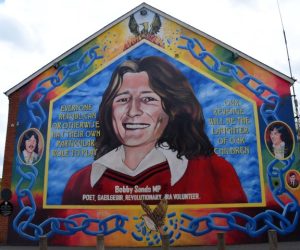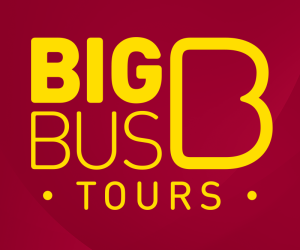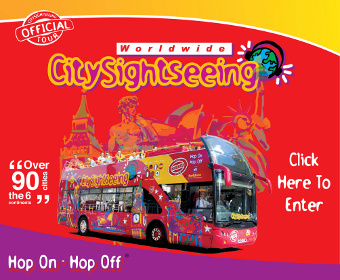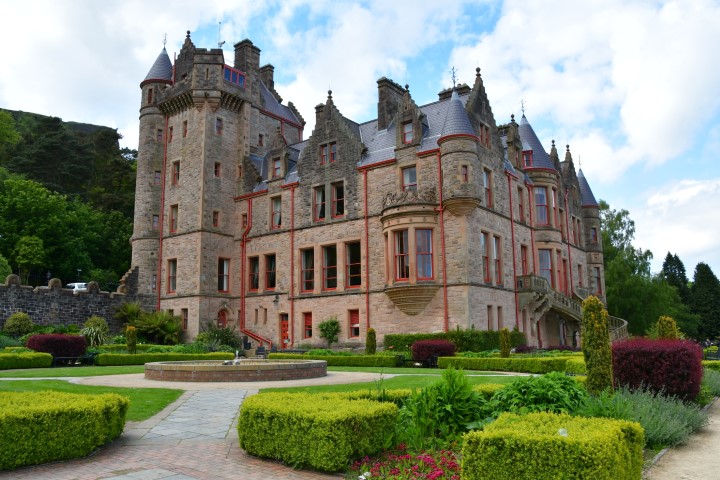Travelers find Belfast to be a seductive destination because of the alluring combination of history, culture, and natural beauty it offers. Exploring the city’s historic sites is essential because the turbulent past of the city has shaped it. While the murals on the Peace Walls highlight Belfast’s complex political past, the Titanic Belfast museum offers a fascinating look into the tragic ship.
In addition to its rich history, Belfast has a thriving arts and music scene. With its galleries, theatres, and live music venues, the Cathedral Quarter is a centre of innovation and offers a wide variety of cultural activities. A peaceful diversion from the busy metropolis is to stroll around the Botanic Gardens or along the River Lagan.
Belfast’s culinary landscape, with its thriving restaurant sector and traditional pub culture, will thrill food connoisseurs. The city offers a variety of dining alternatives to suit every appetite, from traditional Irish stews to modern fusion food.
Visitors that venture outside the city can discover the spectacular surroundings of the Causeway Coast, home to the recognizable Giant’s Causeway and breath-taking coastline vistas. There are many of hiking and outdoor activity options in the surrounding Mourne Mountains.
Overall, a trip to Belfast is gratifying and educational and provides a window into the intricate history and culture of Northern Ireland. In this article, we will give you details on what you should do and see when you visit Belfast.
Visit Titanic Belfast
On the site of the former Harland and Wolff shipyard, where the Titanic was constructed, stands the popular tourist destination Titanic Belfast. Nine interactive galleries of the architectural masterpiece, which is shaped like the hull of a ship, take visitors on a tour through the Titanic’s history, from its construction to its sad demise.
A recreation of the Titanic’s grand staircase, interactive reconstructions of the ship’s launch and sinking, and personal accounts of some of the passengers and crew are among the exhibits and displays found in the galleries. Additionally, the attraction offers guided tours of Belfast’s Titanic Quarter, where visitors may explore some of the important sites connected to the ship’s construction and the city’s long history of shipbuilding.
Anyone interested in the history of the Titanic as well as the more extensive cultural and industrial history of Belfast must pay a visit to the Titanic Belfast.
If you would like to book a tour to see the Titanic Belfast, click here or on the Viator image below to select from one of our preferred suppliers.
Visit Crumlin Road Gaol in Belfast
Belfast’s Crumlin Road Gaol is a former jail. Some of the most renowned inmates in Irish history were housed in the prison, which was established in the middle of the 19th century and was still in use in 1996. Initially intended to house about 500 prisoners, it eventually held more than 1,000.
The prison has a tumultuous past, having witnessed numerous riots, hunger strikes, and escape attempts. In addition, 17 men were put to death there between 1854 and 1961, many of them political prisoners.
The Crumlin Road Gaol is now a museum and a popular tourist destination. Visitors to the jail can take guided tours to learn about its history and the experiences of its inmates. The prison has also used as a filming location for a number of films and TV series and hosts events and concerts in its underground tunnel.
As a reflection of Belfast’s difficult past and the struggles of those who fought for Irish independence, the Crumlin Road Gaol still exists today. For everyone interested in Irish history and culture, they must see an important historical site.
Visit the Peace Walls and Murals in Belfast
The history of sectarian conflict between the Catholic and Protestant communities in Belfast is well-known. Because of the conflicts between these groups, peace walls have been built and murals depicting the difficulties and goals of the communities have been painted.
Large partitions known as “peace walls” separate Catholic and Protestant neighborhoods in Belfast, avoiding direct interaction and reducing deadly confrontation. As a short-term response to the rising violence between the communities, these fences were initially built in the 1970s. The majority of these walls, some of which are up to 25 feet tall and extend for miles, are still in place, though.
On the other side, Belfast’s murals are a creative representation of the communities’ difficulties and aspirations. The political and social themes surrounding the Northern Ireland war are depicted in these murals, which are often seen on the gable walls of buildings. Many of the paintings depict the conflicts and histories of the Republican and Loyalist movements, and they have come to symbolize the identity and cultural expression of the towns.
Although the peace walls and murals were not intended to be tourist attractions, people travel from all over the world to Belfast to see them. The walls and paintings serve as a reminder of the past while also showcasing the advancements made in Northern Ireland’s peace process. They serve as a testament to the ability of art to communicate the complexities of contemporary social and political situations.
There have been proposals in recent years to take down the peace walls and swap them out for more uplifting images of unity. Many Belfast citizens, however, contend that the walls are required to stop the resurgence of sectarian bloodshed. However, the murals still serve as a source of inspiration and a representation of the communities’ hopes for a more tranquil and cohesive Northern Ireland.
Do a Black Cab Tour in Belfast
Tours by Black Cab Belfast is a distinctive and well-liked approach to see the city and discover its complicated history. Informed and enthusiastic local guides take visitors on a journey through Belfast’s turbulent past, including the Troubles and the peace process that followed, by informed and enthusiastic local guides.
The excursions, which normally run 90 minutes, take participants to significant sites connected to the Troubles’ past, such as the Peace Walls, the murals on Falls Road and Shankill Road, and the scene of the 1972 Bloody Sunday atrocity. The guides offer a thorough and instructive explanation of the occasions that molded Belfast’s history as well as insights into the ongoing difficulties the city and its residents face.
For visitors to the city, The Black Cab Tours Belfast are a must-do activity since they offer a distinctive and individualized viewpoint on Belfast’s history and culture.
If you would like to book a Black Cab tour of Belfast, click here or on the Get Your Guide image below to select from one of our preferred suppliers.
Visit the Ulster Museum
Belfast’s Ulster Museum is a well-liked tourist destination that gives tourists a look at the area’s rich natural history and cultural legacy. The museum, which opened its doors in 1929, is home to a sizable collection of more than 8,000 works of art, including drawings, sculptures, and decorative items. It also has a staggering collection of historical artefacts, including the Takabuti Egyptian mummy.
Each gallery of the Ulster Museum focuses on a different theme or element of Northern Ireland’s history and culture. These galleries offer interactive exhibitions, multimedia displays, and hands-on activities that interest visitors of all ages and cover subjects like archaeology, geology, natural history, and art.
The Ulster Museum also holds a variety of temporary exhibitions throughout the year in addition to its permanent collections. These shows highlight the work of local and international artists and explore significant historical moments and current challenges.
In general, the Ulster Museum is a great place to go if you want to learn more about the natural world, culture, and history of Northern Ireland.
Visit the Botanic Gardens in Belfast
Belfast’s Botanic Gardens are a lovely public park in the centre of the city that are well-known for their magnificent collection of plant varieties and Victorian glasshouses. The gardens, which were first built in 1828, have a long history and are now a significant landmark in Northern Ireland.
The 28-acre park has a number of locations, including the Palm House, the Tropical Ravine, and the Rose Garden. Banana trees, orchids, and enormous ferns are just a few of the exotic plant species that can be found within the exquisite Victorian glasshouse known as The Palm House. Another glasshouse with a variety of tropical plants is called the Tropical Ravine. The gorges and valleys of the tropics influenced its design. On the other side, there are more than 300 different varieties of roses in the Rose Garden, which is a gorgeously designed area.
The park offers a variety of amenities for tourists, including a children’s playground, tennis courts, and a bowling alley, in addition to its botanical delights. Throughout the year, the park holds a number of events, such as outdoor theatre productions, art exhibits, and music concerts.
Overall, everyone with a passion for history and nature should visit Belfast’s Botanic Gardens. It’s the ideal location for a peaceful day out because to its magnificent variety of plants, lovely Victorian glasshouses, and tranquil environment.
Hop on Hop Off Bus Tours in Belfast
Exploring Belfast on a hop-on, hop-off bus trip is a great way to do so. The key sights and attractions of the city can be explored at your own leisure on these trips, which are both pleasant and convenient. The hop-on hop-off bus trip gives you the opportunity to explore Belfast’s history, culture, and natural beauty in its entirety.
The open-top hop-on/hop-off buses in Belfast typically offer a distinctive perspective of the city’s sights and attractions. Popular sites including Titanic Belfast, Crumlin Road Gaol, St. George’s Market, and the Botanic Gardens are frequently included on the tour. An audio guide is also available for the tour, which provides details on the cultures and histories of each stop.
The flexibility offered by a hop-on hop-off bus tour is among its best features. You get to decide where to get off and how long you remain. It is the perfect choice for people who wish to tour the city at their own leisure because of this.
In general, the hop-on hop-off bus trip is a fantastic way to see Belfast. It is practical, cozy, and offers a wonderful chance to discover the history and culture of the city.
If you would like to book a ticket on a hop on hop off bus tour in Belfast, click here or on either the Big Bus Tours or CitySightseeing banners below to select from one of our preferred suppliers.
Visit the Belfast Castle
On the crest of Cavehill in north Belfast, Northern Ireland, is where Belfast Castle is located. The castle was constructed for the Marquess of Donegall in the late 19th century, and it was made available to the general public in 1934. One of Belfast’s most well-liked tourist destinations, the castle is a notable landmark in the city.
A gorgeous grand hall, a stunning staircase, and other rooms stuffed with antique furniture and artwork are just a few of the attractions of the castle’s design, which is a blend of Scottish Baronial and French Renaissance styles. Along with beautiful views of Belfast and the surroundings, the castle is flanked by well-kept gardens.
Belfast Castle has a restaurant and a visitor centre in addition to being a well-liked location for weddings, conferences, and other events nowadays. Visitors can enjoy the lovely views of Belfast Lough and the surrounding countryside, tour the castle with a guide, or simply stroll through the grounds. In general, everybody travelling to Belfast should see Belfast Castle.
Visit the Belfast City Hall
In the centre of Belfast, stands Belfast City Hall, a magnificent example of Edwardian Baroque design. It was finished in 1906, and Alfred Brumwell Thomas, who won the contest to design it, was responsible for its design.
Built of Portland stone, the structure has a striking dome that rises 173 feet above the ground. Along with the City of Belfast’s coat of arms, a portrait of Queen Victoria, and a number of statues and memorials, it also has a stunning stained glass window in the Grand Staircase and houses other significant artworks and artefacts.
As the seat of Belfast City Council and venue for several events throughout the year, City Hall is a significant civic and cultural hub. Tourists and locals alike enjoy the building’s grounds, where lovely flowers and fountains offer a peaceful haven in the middle of the busy city.
For anybody with an interest in architecture, history, or culture, Belfast City Hall is a must-visit location. It also serves as a significant symbol of Belfast’s rich tradition and continuous growth.
Visit the Northern Ireland Assembly at Stormont
The Northern Ireland Assembly and the Northern Ireland government are both located at Stormont. It is extremely important politically and historically in the area. Amidst expansive open spaces, the well-known Stormont Castle with its remarkable neoclassical architecture stands, symbolizing the magnificence of the structure and the democratic procedures that take place inside its walls.
In addition to representing government, Stormont also represents the Northern Ireland peace effort. The Good Friday Agreement, which established power-sharing and devolved governance in Northern Ireland after decades of political strife, was signed in 1998. Stormont developed became the hub for political party coordination and decision-making, promoting progress.
Today, tourists can stroll through Stormont’s grounds, enjoying the peaceful settings and understanding the site’s historical significance. Occasional public tours of the actual structure provide an inside look at how Northern Ireland’s government operates.
Stormont serves as a symbol of the area’s path to peace and the continuous work to create a flourishing society that welcomes all. It stands for the people of Northern Ireland’s determination and optimism for a better future.
Nightlife in Belfast
Belfast’s nightlife has changed dramatically in recent years, establishing the city as a vibrant and exciting vacation spot for night owls. When it comes to enjoying the city after dark, Belfast has something for everyone thanks to its diverse selection of bars, clubs, and live music venues.
Particularly in Belfast, the Cathedral Quarter is a well-liked hub for nightlife. Visitors can have a pint of Guinness or try locally brewed craft brews in the stylish taverns and pubs that line its cobblestone streets. The region also has live music venues that highlight the lively music scene of the city, which includes everything from rock and indie bands to traditional Irish folk music.
The Titanic Quarter provides chic cocktail bars and waterfront eateries with breath-taking views for those looking for a more upmarket experience. Another lively location is the bustling Botanic Avenue, which is well-known for its bars that cater to college students and its upbeat vibe.
Belfast offers a variety of cultural experiences in the evening, so the city’s nightlife is not solely limited to drinking and dancing. There are many ways to enjoy the arts and entertainment scene, from live concerts and art exhibits to theatre performances and comedy events.
Overall, Belfast’s nightlife is growing, with a wide variety of events and places to suit various tastes. Belfast has a lot to offer for a memorable nightlife experience, whether you are searching for a laid-back evening with friends or a wild night out on the town.
Festivals in Belfast
Belfast, the vivacious capital of Northern Ireland, is well-known for both its vibrant festivals that highlight the city’s artistic and musical prowess and its rich cultural legacy. Belfast holds a variety of festivals throughout the year that draw both locals and visitors.
The Belfast Festival at Queen’s, a yearly celebration of the arts, music, and culture, is one of the most well-known festivals in Belfast. Theatre, dance, concerts, and exhibitions of visual arts are among the performances that make up the festival’s spectacular schedule. It creates a lively and captivating environment for guests by displaying both local talent and international artists.
The Cathedral Quarter Arts Festival is another well-liked festival in Belfast. This festival, which is held in the ancient Cathedral Quarter, features the top national and international performers in the fields of music, comedy, theatre, literature, and visual arts. The festival brings art and entertainment to the streets of Belfast with its diversified programme and lively atmosphere.
Broad varieties of cultural events are available in Belfast, including the Belfast International Arts Festival, the Belfast Film Festival, and the Belfast Pride Festival, among many others.
These festivals in Belfast not only honor the artistic accomplishments of the city but also add to its thriving cultural landscape, promoting a sense of community and giving tourists from near and far an unforgettable experience.
In summary, Belfast is a fascinating city with a rich and complicated history. Thanks to its numerous tourist sites, tourists may get a truly authentic sense of the city’s culture and history. There is something for everyone in this vibrant and diverse city, from the magnificent architecture of the Grand Opera House to the interactive exhibitions at the Titanic Belfast.
If you would like to book a ticket to see an event or festival in Belfast, click here or on the Ticketmaster image below to select from one of our preferred suppliers.

























